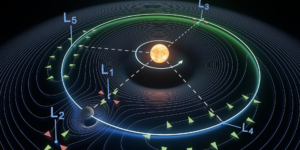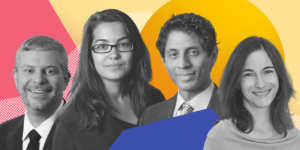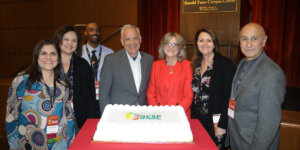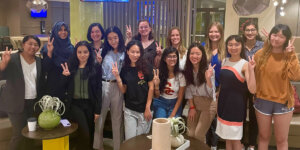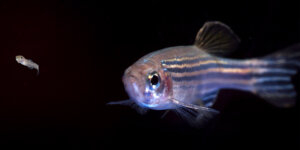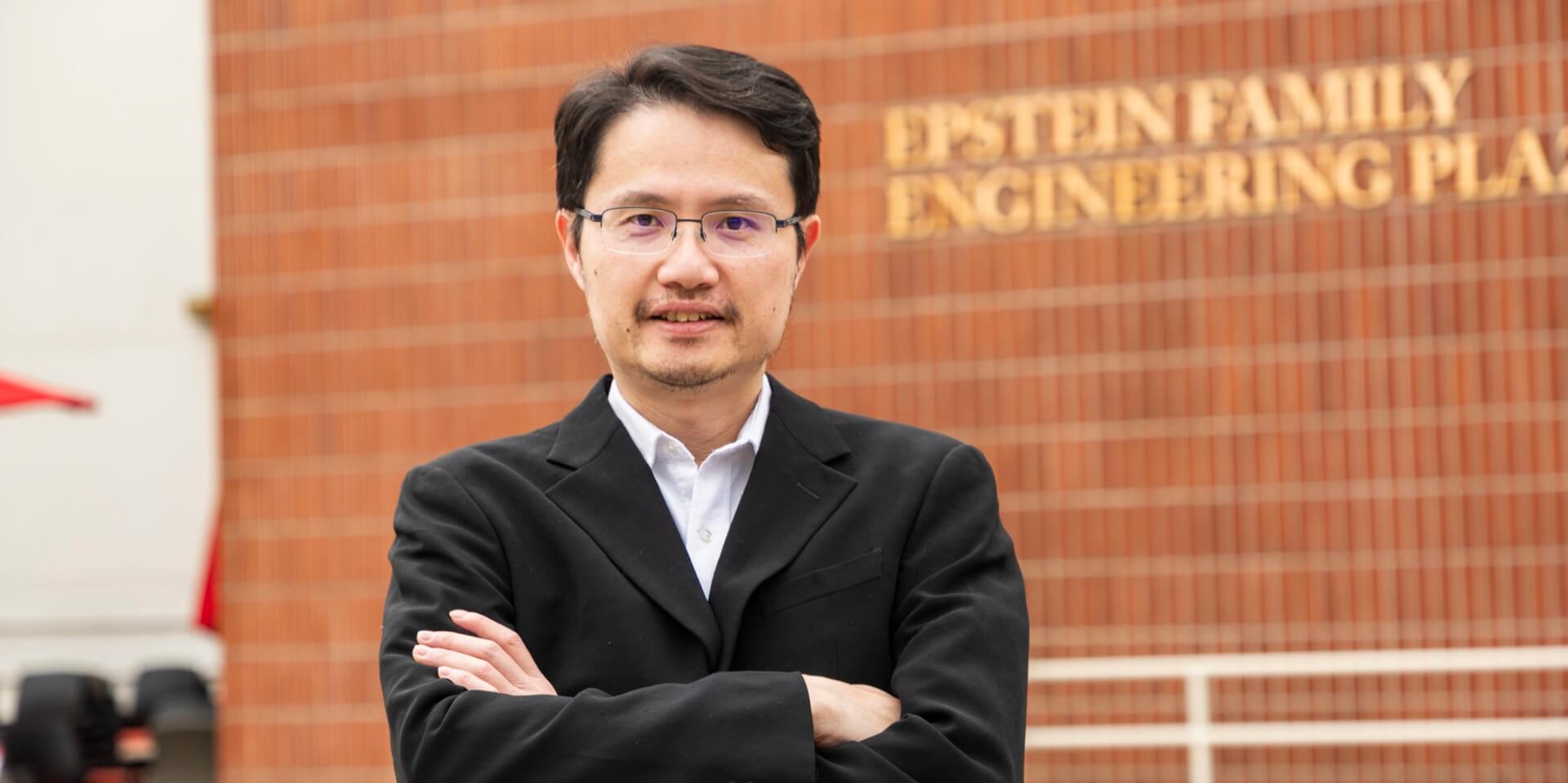
Professor Mike Shuo-Wei Chen has been working on new high-speed, high-efficiency time-domain analog-to-digital converter (ADC) architecture. (USC Photo/Angel Ahabue)
It’s tempting to think of the analog world as obsolete. But it’s all around us, and we use analog devices all the time. The music on your iPhone is stored digitally but played back by converting to analog in your headphones.
Mike Shuo-Wei Chen and his team have invented various data-conversion architectures over the years, including a well-known one called an asynchronous SAR ADC that he developed as a PhD student. He explained that “it has been widely adopted by industry. People are using that analog-to-digital converter architecture because you can run it with very little power, and also it can run at very high speed.”
In fact, the technology is well suited for use in many sectors, including next-generation wireless networks (5G and 6G), self-driving cars, and video games.
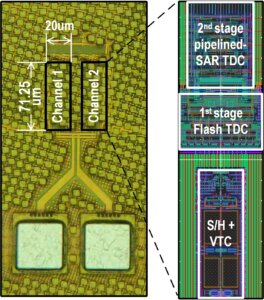
Layout of the time-domain ADC Professor Chen and his team have developed.
As Chen says: “My group is now focused mostly on the circuit innovation. How can we come up with better circuit architectures, so we can run faster, with higher resolution, and even lower power?”
The aim is to develop the most efficient chips to seamlessly connect between the analog and digital world. And, there continue to be remarkable new results from this focused research direction. Mike Chen, along with students Juzheng Liu and Mohsen Hassanpourghadi, developed a new high-speed, high-efficiency time-domain analog-to-digital converter (ADC) architecture, and this was recognized with the prestigious International Solid-State Circuits Conference (ISSCC) Jack Kilby Award for Outstanding Student Paper in 2022. The ADC has recently been implemented in advanced complementary metal-oxide semiconductor (CMOS) technology and is transitioning for use in high-volume commercial wireless and wireline products.
Another of Chen’s students, Mostafa Ayesh, presented a highly regarded paper at ISSCC 2024 in San Francisco last month regarding his work on a wireless receiver based on non-uniform sampling, and how to design non-uniform discrete-time filters. Co-authors were Soumya Mahapatra and Ce Yang.
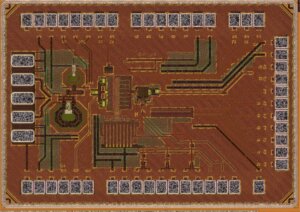
A rendering of the non-uniform sampling receiver chip that student Mostafa Ayesh presented at ISSCC 2024.
“As converter technology becomes better and better, that creates a new opportunity,” Chen said after returning from ISSCC. “This work we presented was part of that. ADC used to be just sampling and converting into digital bits. But we said No, when you do sampling you can also do additional filtering simply by manipulating the sampling instants. That’s the real trick. So now we can do not just data conversion closer and closer to the source (e.g. the antenna in wireless communications), we can also embed new functionality into data converters. That’s the game-changer here.
“We feel it’s really one of the exciting future directions. So industry has latched on to that. It’s a very new concept.”
It seems there is a great future for innovation working at the boundary between the analog and digital worlds, and that future is happening at USC.
Published on March 11th, 2024
Last updated on March 14th, 2024




